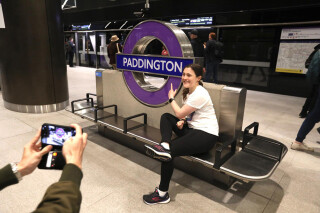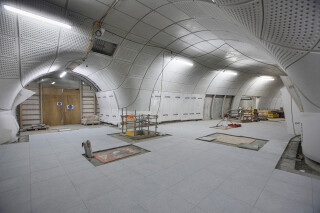On 17th May this year the Queen made a rare public appearance to officially open London Underground’s new Elizabeth line, named in her honour. It was a long-awaited ceremony that was also long overdue.
Work on the £19bn project got underway in May 2009 with the main construction phase starting in 2011. Tunnelling began in May 2012 and was completed in May 2015 – but the past seven years have been spent trying to install and commission the complex mechanical and electrical equipment, with delays pushing completion back another four years.
Extensive commissioning of the railway started in spring 2021 when trial running began. Trial operations then started in November 2021 but Transport for London is still, even now, not yet ready to offer the full service. Work is still continuing at Bond Street Elizabeth line station, which will open later in the year.
And the Elizabeth line will initially operate as three separate railways, with services from Reading, Heathrow and Shenfield connecting with the central tunnels from autumn this year.
For the time being, 12 trains per hour will run between Paddington and Abbey Wood in south-east London from 06:30 to 23:00, Monday to Saturday. Work will continue outside those hours and on Sundays to allow a series of testing and software updates in preparation for more intensive services from the autumn.

Services from Reading and Heathrow to Paddington, and Shenfield to Liverpool Street, currently operate as TfL Rail but they will be rebranded as the Elizabeth line. To begin with, customers travelling between Reading or Heathrow and London will need to change at Paddington for services on the central section of the route. Customers coming from Shenfield into London will need to change at Liverpool Street.
While the delays and cost overruns during the M&E phase attracted criticism (some critics gleefully renaming the project ‘Crossfail’) the main construction phase was widely praised as a triumph of civil engineering and project management.
As Europe’s largest construction project, employing around 10,000 workers on more than 40 construction sites, the route was sprinkled with fiendishly complex civil engineering schemes. Nowhere was this more in evident than at Farringdon, geographically and operationally at the centre of the project.

Farringdon was the meeting point for four tunnelling drives: earth pressure balanced tunnel boring machines (TBMs) Phyllis and Ada arrived in 2013, having completed the twin western tunnel routes across central London from Royal Oak. TBMs Victoria and Elizabeth arrived in early 2015 after an exhausting 8.3km trek – the longest drive on the Crossrail project – from Limmo Peninsula near Canning Town.
Quite apart from the challenge of tunnelling so extensively through ground already congested with tunnels, services and deep foundations, the Crossrail team had the task of disposing of millions of tonnes of excavated material.
Nearly all of this has been used to create a new RSPB nature reserve at Wallasea Island on the River Crouch in Essex. By May 2015, when the last shipment arrived, the Crossrail project had donated around three million tonnes of soil in 1,528 shipments. Nearly 80% of this material was delivered by rail and water, saving London from an estimated 150,000 lorry movements.

Such achievements were largely overlooked as delays and cost overruns started to pile up. In 2019 the National Audit Office (NAO) published a report criticising project managers for the way they ran the scheme and ignored mounting evidence that it was getting out of hand.
Crossrail’s compressed schedule, the contractual model, the loss of downward pressure on costs and the absence of an achievable plan were set against an atmosphere where ‘can do’ became unrealistic, said the NAO.
The outbreak of Covid-19 in 2020 delayed the project further although, by then, the media had become preoccupied with other stories. And so when, in May this year, the new Elizabeth line finally opened its doors to paying customers, it was to a chorus of cheers from crowds who had gathered at stations along the route to be amongst the first passengers.
London mayor Sadiq Khan and TfL commissioner Andy Byford headed queues at Paddington as the first Abbey Wood-bound train rolled in at 6:18am. Khan confessed that he felt “like that little boy on Christmas Eve, waiting for Santa”.
Got a story? Email news@theconstructionindex.co.uk


